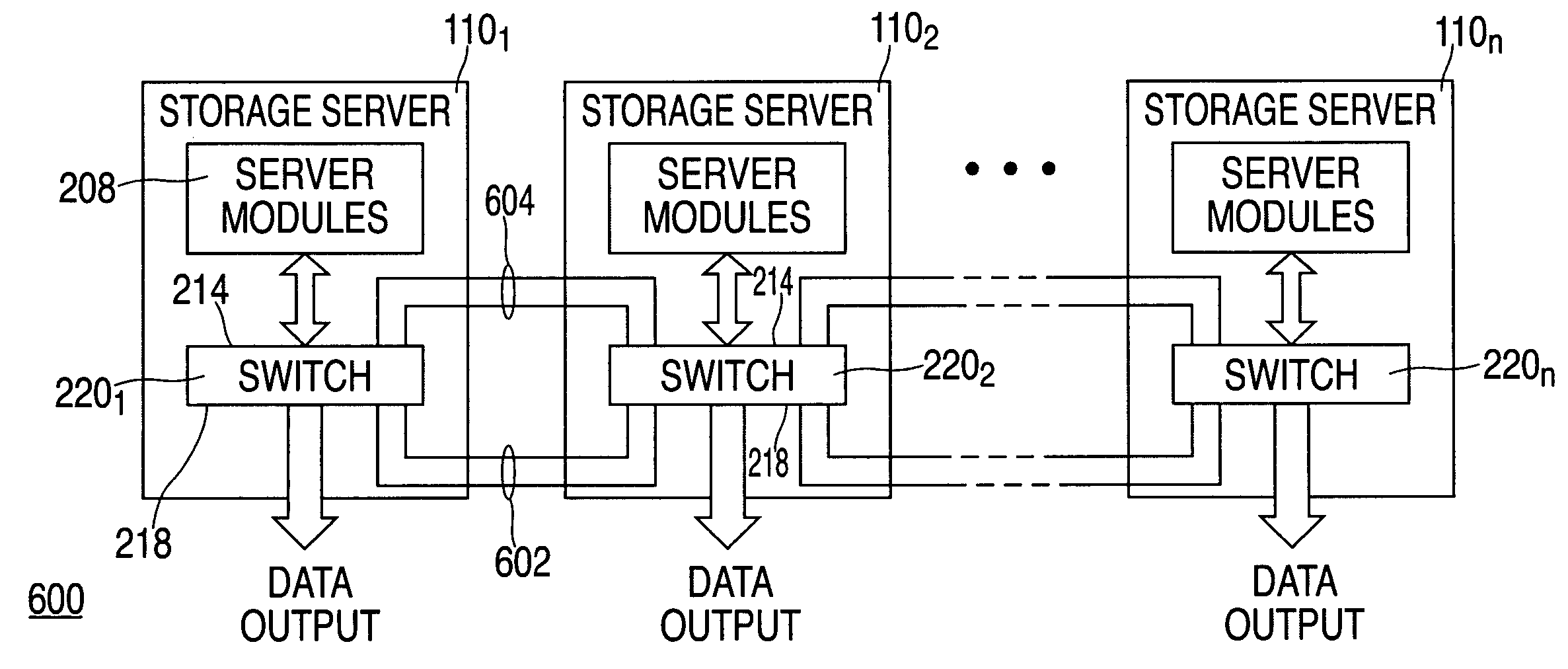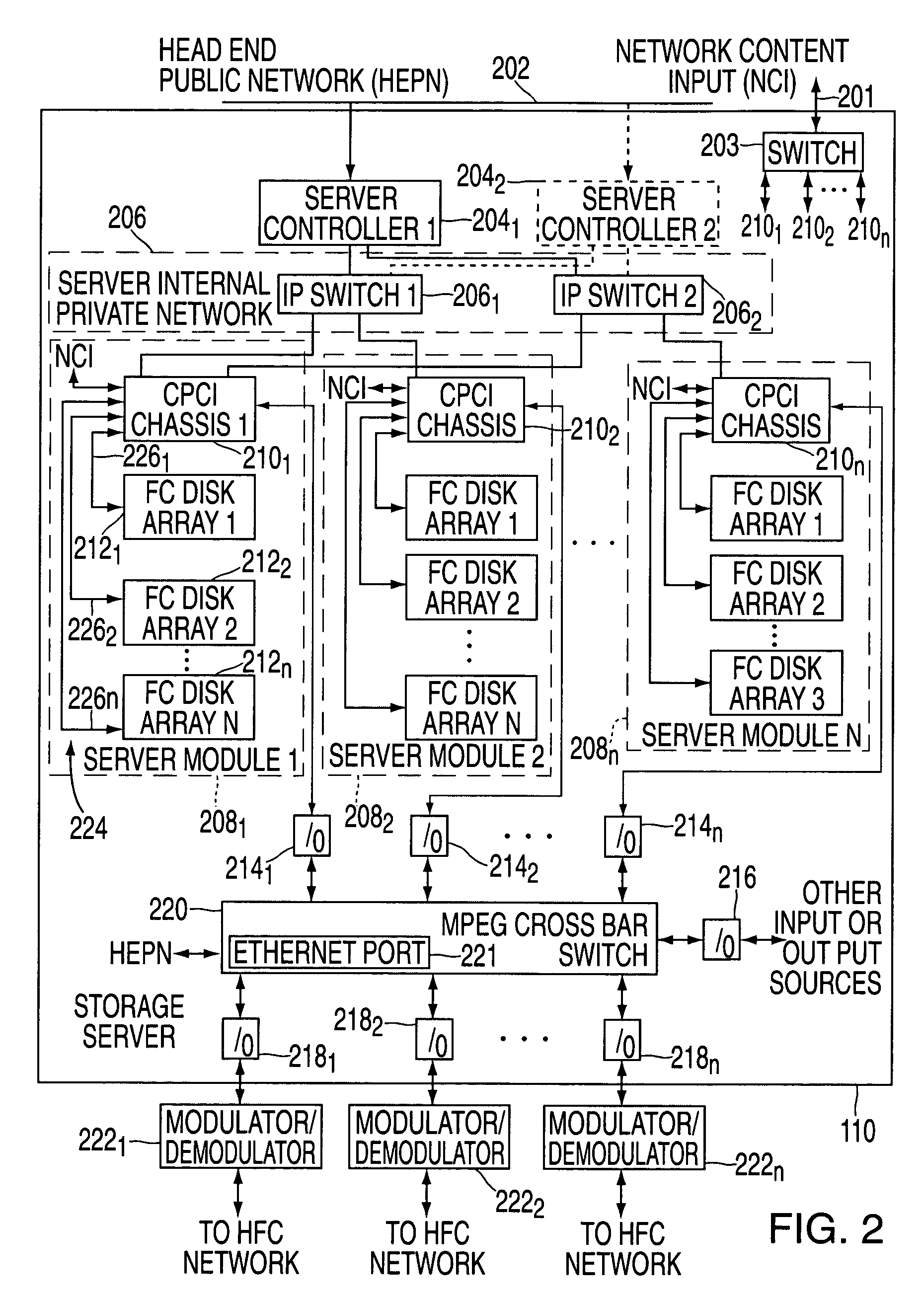Tightly-coupled disk-to-CPU storage server
a disk-to-cpu storage server and tightly coupled technology, applied in computing, digital computers, instruments, etc., can solve the problems of multiple processor servers, switch becomes a major source of latency, delay in data routing, etc., to achieve low latency data streaming, no processor overhead or time wasted arbitrating, and efficient use of available bandwidth
- Summary
- Abstract
- Description
- Claims
- Application Information
AI Technical Summary
Benefits of technology
Problems solved by technology
Method used
Image
Examples
Embodiment Construction
[0016]FIG. 1 depicts a client / server data retrieval system 100 that employs a storage server 110 which accepts user access requests from clients 120 via data paths 150. Server 110 retrieves the requested data from disks within the server 110 and outputs the requested data to the user via data paths 150. Data streams from a remote source (secondary storage 130) are received by the storage server 110 via data path 140. The data streams from the secondary storage are generally stored within the storage server for subsequent retrieval by clients 120.
[0017] In a video on demand (VOD) application, the clients 120 are the users' transceivers (e.g., modems that contain video signal decoders and an associated communications transmitter that facilitate bidirectional data communications) and the data from the storage server is modulated in a format (e.g., quadrature amplitude modulation (QAM)) that is carried to the clients via a hybrid-fiber-coax (HFC) network. The transceiver contains circu...
PUM
 Login to View More
Login to View More Abstract
Description
Claims
Application Information
 Login to View More
Login to View More - R&D
- Intellectual Property
- Life Sciences
- Materials
- Tech Scout
- Unparalleled Data Quality
- Higher Quality Content
- 60% Fewer Hallucinations
Browse by: Latest US Patents, China's latest patents, Technical Efficacy Thesaurus, Application Domain, Technology Topic, Popular Technical Reports.
© 2025 PatSnap. All rights reserved.Legal|Privacy policy|Modern Slavery Act Transparency Statement|Sitemap|About US| Contact US: help@patsnap.com



